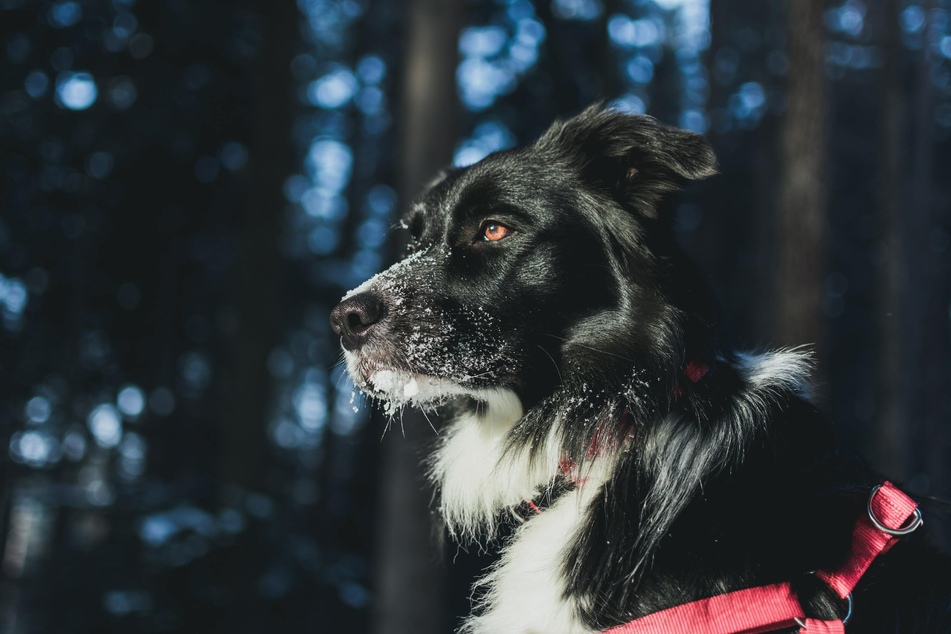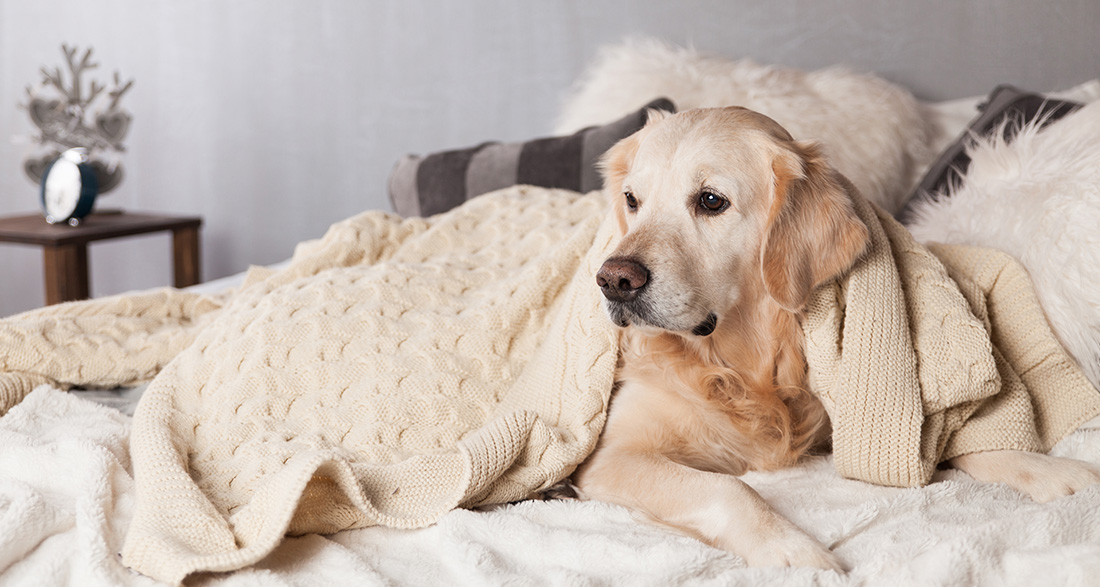In the cold months of the year, the season of colds begins, and this includes our beloved four-legged friends. However, other factors can also cause a cold in dogs.
Dogs can catch a cold or respiratory infection
As temperatures drop, your dog may soon start coughing, sneezing, and even develop a fever. If this happens, your dog has likely caught a cold.
Whether the dog gets sick depends on how well the immune system copes with external influences and pathogens.
Not all dog owners know what to do when their dog has a cold. Traditional home remedies for colds, such as cold baths, wraps, and gargling with sage tea, are probably not suitable treatments for your beloved pet.
The dog guide on iHugDogs explains how to recognize, treat, and prevent a cold or respiratory infection in your dog.
Symptoms in dogs with a cold

Just like humans, dogs exhibit classic cold symptoms such as coughing, fever, and a runny nose. However, owners can also recognize other signs indicating whether their dog is unwell.
If the dog has a cold, the following symptoms may occur:
- Fever
- Coughing
- Sneezing
- Nasal discharge
- Labored breathing
- Fluid tears from the eyes
- Sticky eyes
- Lethargy
- Lack of enthusiasm
- Excessive sleeping
- Loss of appetite
- Hoarseness
- Hypersensitive throat area
Dog owners should be able to recognize and correctly identify these symptoms.
When a dog has a cold, it does not necessarily experience all symptoms simultaneously. Moreover, the dog may not always have a cold when it appears sick. If dog owners are unsure, it’s better to take the dog to the vet to rule out or treat serious and life-threatening conditions.
The dog is coughing.
During an infection in the dog’s throat, it makes unusual sounds, resembling an attempt to vomit. If the dog only produces white liquid, mucus, or foam, it indicates a severe infection.
Intensive stimuli like pulling on the leash can also provoke coughing in dogs.
The dog is sneezing.
Strong emotions such as joy or stress can trigger sneezing as a displacement behavior in dogs. However, this does not repeat multiple times.
Persistent sneezing accompanied by head shaking and one-sided bloody discharge suggests a foreign object in the dog’s nose. The dog will continuously touch its nose in this case. Allergies and fungal infections are also possible causes of sneezing and nasal discharge.
Frequent sneezing with clear or yellowish discharge from both sides of the dog’s nose indicates a cold. Dogs may also lick their noses more frequently.
Does the dog have a fever?
The normal body temperature for dogs is between 101.0°F and 102.5°F. Puppies, on the other hand, may sometimes have a body temperature of 103,1°F. Small dog breeds may have a temperature around 102,2°F.
However, if the thermometer shows a body temperature of 104°F or more, the dog has a fever and should be taken to the vet.
The vet can make an accurate diagnosis and take appropriate measures to treat the dog, as well as prescribe specific medications.

Causes of a Cold in Dogs
Dogs are particularly susceptible to sniffles or colds when their immune system is weakened.
On one hand, the climate and weather contribute to dogs losing resilience, making them susceptible to pathogens. The decrease in outdoor temperatures during fall, winter, and spring, coupled with rain or snow, creates a damp and chilly environment, which is uncomfortable not only for humans but also for dogs.
Another strain on a dog’s body is the significant temperature difference between indoor and outdoor environments.
On the other hand, dogs can quickly become chilled if the room is too cold or if they lie on cold surfaces for too long. However, increased heating in the home dries the air, depriving the mucous membranes in the dog’s nose and mouth of moisture, making them more susceptible to bacteria and viruses.
The increased susceptibility of dogs to illness is not solely dependent on the cold seasons; stress and other psychological burdens also weaken the animals’ immune defenses.
Another potential cause is droplet infection from other sick dogs during play or other interactions.
It has not been definitively proven that dogs can transmit pathogens to humans.
What to do if your dog has a cold?
Dogs with sniffles or colds need rest and relaxation above all. Dog owners should pamper their pets and avoid bringing them to training sessions.
It is best to create a comfortable, warm, and quiet place for the sick animal, where it can relax and sleep soundly. The sleeping area should also be warm from below.
An ailing dog should drink as much as possible. Dog owners can offer more water or mix it into the food. Drinking is also necessary to reduce the dog’s potential fever.
Since dry food irritates the dog’s throat and neck, it should either not be fed for a while, or it can be soaked in warm water beforehand. Dog food should generally be of high quality, easily digestible, and rich in vitamins.
Despite low temperatures and the dog’s cold, dog owners can still take their pets for a walk. However, these walks should be short. It is important to observe the dog to recognize if it is cold. After each walk, it is also advisable to dry the dog’s fur, for example, with a towel.
If the dog is sick, contact with other dogs should be avoided to prevent infection and to keep the dog from getting too excited.

Can home remedies help a dog with a cold?
Any medications and other treatments should only be administered to the dog in consultation with a veterinarian. Dog owners should not use medications and substances intended for humans or other animals to treat their dogs.
In some cases, inhalation is recommended for the dog. Water with a little sea salt, pure chamomile tea, or some homeopathic remedies such as Echinacea would be suitable for this purpose, and essential oils and artificial fragrances should be avoided.
If dog owners want their four-legged friend to inhale, they should place the dog in a transport box, close it, and place a bowl of warm and still steaming liquid in front of it at a distance. Afterwards, both should be covered with a cloth.
Inhalation only works if the animal can remain relaxed in the box. The dog should not be able to burn itself on the bowl and should not inhale unsupervised and for too long.
How to prevent a cold in dogs?
Not only a warm sleeping place and drying off after short walks help prevent a cold in dogs. For very susceptible dogs, winter clothing and paw protection may be appropriate preventive measures for walks.
Puppies should only be outside for a short time in low temperatures. It is advisable to gradually increase the duration of the walks. This training helps small dogs acclimate to the temperatures.
If the room air becomes too dry due to heating, dog owners can use a humidifier. This not only benefits the dog’s mucous membranes but also ensures a pleasant room climate.
Additionally, extra vitamins strengthen the dog’s immune system. In consultation with a dog advisor or veterinarian, supplements such as linseed or fish oil can be administered to the dog.
If there is no improvement in the dog after a few days or if dog owners are unsure how to help their dog, a veterinarian should be consulted.


